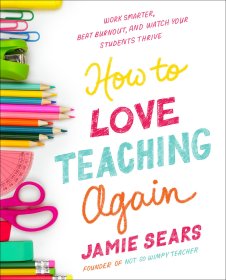
【预订】Old Babes in the Wood
书籍内容简介可联系客服查阅,查书找书开票同样可以联系客服
¥ 88 ¥ 88 九五品
库存7件
作者Margaret Atwood
出版社Knopf Doubleday Publishing Group
ISBN9780593468418
出版时间2024-03
装帧平装
定价88元
货号YB-88876
上书时间2024-06-28
- 最新上架
商品详情
- 品相描述:九五品
- 商品描述
-
商品简介
NATIONAL BESTSELLER • From the bestselling, award-winning author of The Handmaid's Tale and The Testaments, a dazzling collection of short stories that look deeply into the heart of family relationships, marriage, loss and memory, and what it means to spend a life together
"If you consider yourself an Atwood fan and have only read her novels: Get your act together. You’ve been missing out.” —The New York Times Book Review, Rebecca Makkai, best-selling author of The Great Believers
Margaret Atwood has established herself as one of the most visionary and canonical authors in the world. This collection of fifteen extraordinary stories—some of which have appeared in The New Yorker and The New York Times Magazine—explore the full warp and weft of experience, speaking to our unique times with Atwood’s characteristic insight, wit and intellect.
The two intrepid sisters of the title story grapple with loss and memory on a perfect summer evening; “Impatient Griselda” explores alienation and miscommunication with a fresh twist on a folkloric classic; and “My Evil Mother” touches on the fantastical, examining a mother-daughter relationship in which the mother purports to be a witch. At the heart of the collection are seven extraordinary stories that follow a married couple across the decades, the moments big and small that make up a long life of uncommon love—and what comes after.
Returning to short fiction for the first time since her 2014 collection Stone Mattress, Atwood showcases both her creativity and her humanity in these remarkable tales which by turns delight, illuminate, and quietly devastate.
全国畅销书 来自畅销书、屡获殊荣的《使女的故事》和《遗嘱》作者,这是一本令人眼花缭乱的短篇小说集,深入探讨了家庭关系、婚姻、失落和记忆的核心,以及共同度过一生的意义
“如果您认为自己是阿特伍德粉丝并且只读过她的小说:请振作起来。您已经错过了。”—纽约时报书评,丽贝卡·麦凯,畅销书《伟大的信徒》作者
玛格丽特·阿特伍德已成为世界上最有远见、最经典的作家之一。这本小说集收录了十五个非凡的故事——其中一些曾出现在《纽约客》和《纽约时报》上杂志—探索经验的全面经纬,用阿特伍德特有的洞察力、机智和才智讲述我们独特的时代。
标题故事中的两个勇敢的姐妹努力应对一个完美的夏日夜晚的失落和记忆; “不耐烦的格里塞尔达”通过对民俗经典的新鲜诠释,探讨疏离和沟通不畅;和“我邪恶的母亲”触及奇幻的母女关系,其中母亲自称是女巫。该系列的核心是七个非凡的故事,讲述了一对已婚夫妇几十年来的大大小小的时刻不寻常的爱情的漫长一生—以及之后发生的事情。
自 2014 年作品集《石床垫》以来,阿特伍德首次回到短篇小说,在这些作品中展示了她的创造力和人性非凡的故事时而令人愉悦,时而启发人心,时而悄然毁灭。
作者简介
Margaret Atwood is the author of more than fifty books of fiction, poetry and critical essays. Her 1985 classic, The Handmaid’s Tale, was followed in 2019 by a sequel, The Testaments, which was a global number one bestseller and won the Booker Prize.
精彩内容
Chapter 1
i
TIG & NELL
first aid
Nell came home one day just before dinnertime and found the front door open. The car was gone. There was a trail of blood splotches on the steps, and once she was inside the house, she followed it along the hall carpet and into the kitchen. There was a knife on the cutting board, one of Tig’s favourites, Japanese steel, very sharp—and beside it, a bloodstained carrot, one end severed. Their daughter, nine at the time, was nowhere to be found.
What were the possible scenarios? Desperadoes had broken in. Tig had tried to defend himself against them, using the knife (though how to explain the carrot?), and had been wounded. The desperadoes had made off with him, their daughter, and their car. Nell should call the police.
Or else Tig had been cooking, had sliced himself with the knife, had judged that he needed stitches, and had driven himself to the hospital, taking their daughter with him to avoid leaving her by herself. This was more likely. He must have been in too much of a hurry to leave a note.
Nell got out the bottle of carpet cleaner and sprayed the blood spots: they would be much harder to get out once they’d dried. Then she wiped the blood off the kitchen floor and, after a pause, off the carrot. It was a perfectly good carrot; no need for it to go to waste.
Time passed. Suspense built. She was at the point of phoning all the hospitals in the vicinity to see if Tig was there when he came back, hand bandaged. He was in a jovial mood, as was their daughter. What an adventure they’d had! The blood was just pouring out, they reported. The tea towel Tig had used for wrapping the cut had been soaked! Yes, driving had been a challenge, said Tig—he didn’t say dangerous—but who could wait for a taxi, and he’d managed all right with basically just one hand since he’d needed to keep the other one raised, and the blood was trickling off his elbow, and they’d sewn him up quickly at the hospital because he was dripping all over everything, and anyway, here they were! Luckily not an artery, or it would be a different story. (It was indeed a different story when Tig told it a little later, to Nell: his bravado had been an act—he hadn’t wanted to frighten their daughter—and he’d been worried that he would pass out if the blood loss got out of control, and then what?)
“I need a drink,” said Tig.
“So do I,” said Nell. “We can have scrambled eggs.” Whatever Tig had been planning to do with the carrot was no longer on the agenda.
The tea towel had been brought back in a plastic bag. It was bright red but beginning to brown at the edges. Nell put it to soak in cold water, which was the best way to deal with bloodstained fabrics.
But what would I have done if I’d been here? she wondered. Not a Band-Aid: insufficient. A tourniquet? She’d had perfunctory instruction in those at Girl Guides. They’d done wrist sprains too. Minor emergencies were her domain, but not major ones. Major ones were Tig’s.
That was some time ago. Early autumn, as she recalls, a year in the later 1980s. There were personal computers then, of a lumbering kind. And printers: the paper for them came with the pages joined together at top and bottom, and had holes along the sides, in perforated strips that you had to tear off. No cellphones though, which was why Nell hadn’t been able to text or call Tig and ask him where he was, and also what had caused the blood?
How much waiting we used to do, she thinks. Waiting without knowing. So many blanks we couldn’t fill in, so many mysteries. So little information. Now it’s the first decade of the twenty-first century, space-time is denser, it’s crowded, you can barely move because the air is so packed with this and that. You can’t get away from people: they’re in touch, they’re touching, they’re only a touch away. Is that better, or worse?
She switches her attention to the room the two of them are in right at this moment. It’s in a nondescript high-rise on Bloor Street, near the viaduct. She and Tig are sitting in chairs that are something like schoolroom chairs—there is in fact a whiteboard at the front—and a man called Mr. Foote is talking. The people in the other chairs, who are also listening to Mr. Foote, are at least thirty years younger than Tig and Nell; some of them perhaps forty years younger. Just kids.
“If it’s a motorcycle crash,” says Mr. Foote, “you don’t want to take off the helmet, do ya. Because you don’t know what’s gonna be in there, eh?” He moves his hand in front of him, circularly, as if cleaning a window.
Good point, thinks Nell. She imagines the glass of a helmet, smeared. Inside, a face that is no longer a face. A face of mush.
Mr. Foote has a talent for conjuring up such images. He has a graphic way of speaking, being from Newfoundland. He doesn’t tiptoe around. He’s built on a square plan: wide torso, thick legs, a short distance between ear and shoulder. It’s a balanced shape, with a low centre of gravity. Mr. Foote would not be easy to upend. Nell expects that’s been tried, in bars—he looks as if he’d know his way around a bar fight, but also as if he wouldn’t get into any of those he couldn’t win. If pushed too hard he’d throw the challenger through a window, calmly—“You needs to keep calm,” he has already said twice—then check to make sure there were no bones broken. If there were, he’d splint them, and treat the victim for cuts and abrasions. Mr. Foote is an all-in-one package. In fact, he’s a paramedic, but that does not come out until later in the day.
He’s carrying a black leather binder and wearing a long-sleeved zip-fronted sweatshirt with the St. John Ambulance logo on it, as if he’s a team coach, which in a way he is: he’s teaching them first aid. At the end of the day there will be a test and they will each get a certificate. All of them are in this room because they need this certificate: their companies have sent them. Nell and Tig are the same. Thanks to a family connection of Tig’s, they’re giving talks on a nature-tour cruise ship, birds for him, butterflies for her: their hobbies. So they are technically staff, and all staff on this ship have to get the certificate. It’s mandatory, their ship contact has told them.
What hasn’t been said is that the majority of the passengers—the guests—the clientele—will not be young, to put it mildly. Some of them will be older than Nell and Tig. Truly ancient. Such people can be expected to topple over at any minute, and then it will be certificates to the rescue.
Nell and Tig are unlikely to be doing any actual rescuing: younger people will leap in, Nell’s counting on that. In a pinch, Nell will dither and claim she’s forgotten what to do, which will be true. What will Tig do? He will say, Stand ba
相关推荐
-

【预订】Old Babes in the Wood
九五品成都
¥ 88.00
-

【预订】Old Babes in the Wood
九五品广州
¥ 88.00
-

【预订】Old Babes in the Wood
九五品济南
¥ 88.00
-

【预订】Old Babes in the Wood
九五品广州
¥ 88.00
-

Old Babes in the Wood: Stories
全新宜春
¥ 195.00
-

预订 Old English Legal Writings
九五品西安
¥ 307.00
-

预订 Complete Old English 古英语
九五品西安
¥ 420.00
-

预订 First Readings in Old English
九五品西安
¥ 390.00
-

预订 Old English: A Linguistic Introduction 古英语
九五品西安
¥ 349.00
-

【预订】Annihilation: Star Wars Legends (The Old Republic)
九五品广州
¥ 118.00
— 没有更多了 —












以下为对购买帮助不大的评价